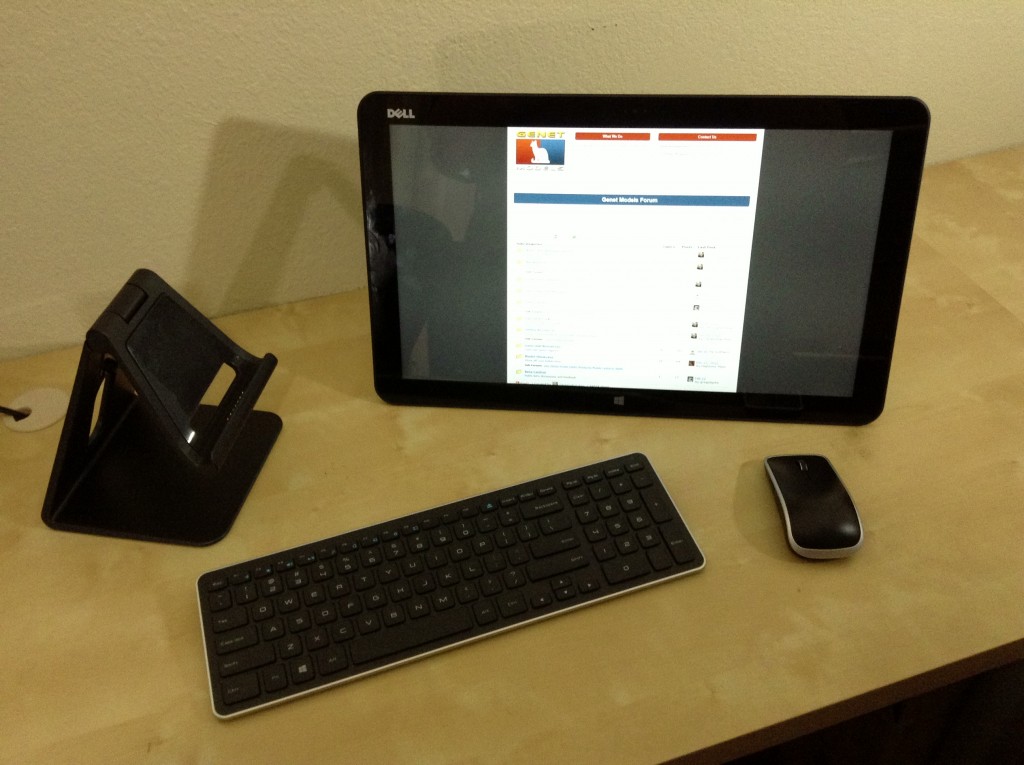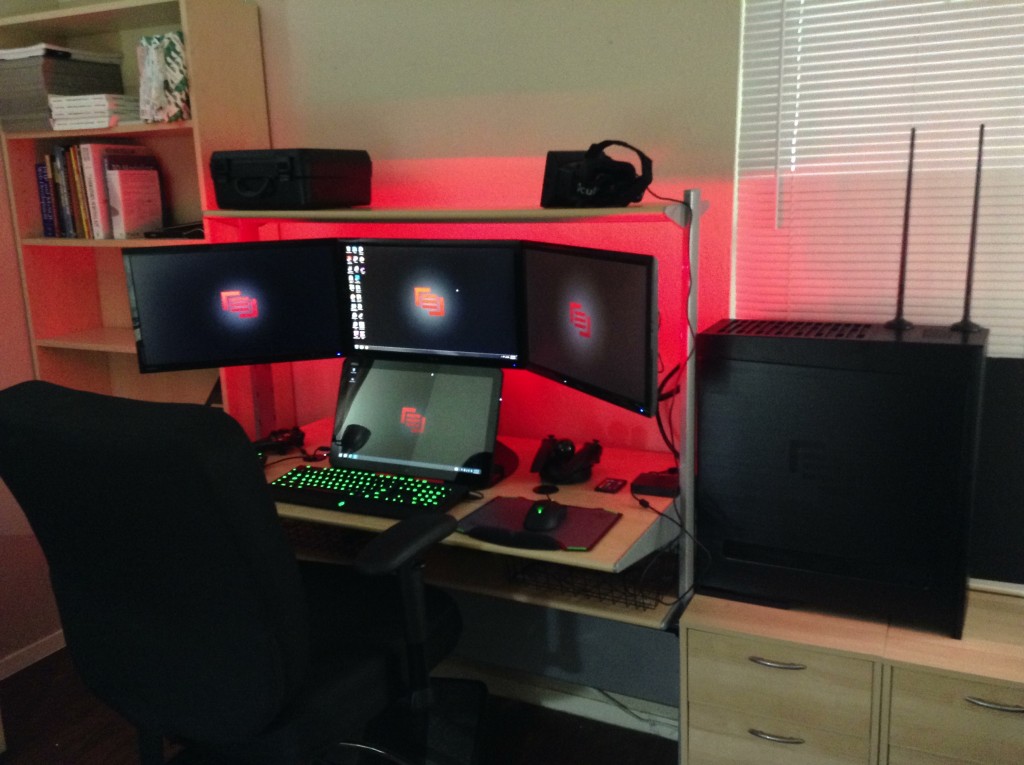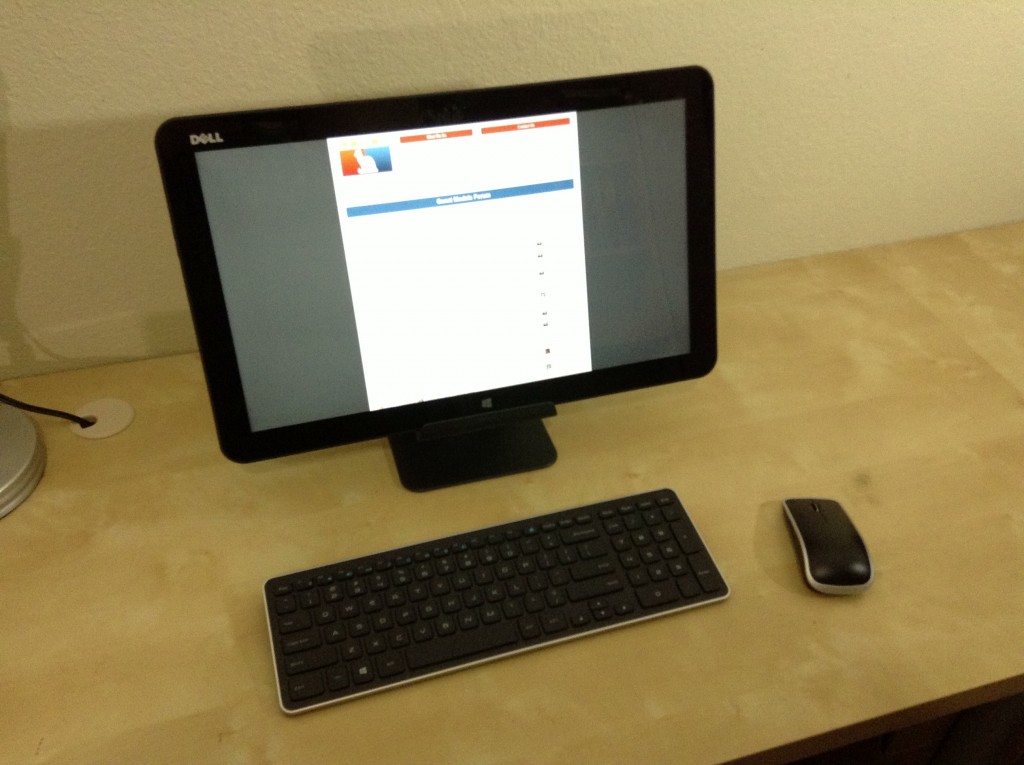After getting a new job as an indie video game developer with Cloudhead Games, I found myself in a first-world-problem situation where I needed an additional workstation display devoted primarily to communications and documentation. Since I didn’t have any more display ports available on my workstation, I decided to shop around for a Windows 8 tablet that I could also use as a replacement for my 2 year old XPS 15 notebook.
I ended up with a Dell XPS 18 all-in-one. It comes with a wireless keyboard, mouse, and an articulated stand. The tablet also has a pair of fold-out legs on the back, which allows it to stand by itself in 2 different ways.
On the surface, an 1080p tablet with an 18.4″ screen that clocks in at 5 pounds sounds like an absurd novelty. Dell goes out of its way to call it an all-in-one that happens to be really portable, rather than suggest that it be used in the same way as smaller tablets. They’re right–unless your bulging, spinach-powered forearms make full-grown silverback gorillas take up kettlebells out of a sudden sense of inadequacy, you’re not going to be curling up on the sofa to read 1500-page ebooks on this thing.
I didn’t personally find the weight to be that much of an issue, though. It weighs nearly 2 pounds less than my dearly departed Gateway CX2720 convertible that the XPS 15 notebook replaced 2 years ago, and is also nearly a pound lighter than the XPS 15 notebook. I was used to spending significant amounts of time working with the 7-pound CX2720 in tablet mode, so I guess that skews my perception of the XPS 18’s weight a bit towards the positive side.
I opted for the midrange Core i5 configuration with 8GB of RAM. The lower end Pentium and Core i3 configurations are probably more than plenty for just Skype and Internet browsing alone, but I also wanted it to be usable for other stuff like my papercraft projects and web design.
Here are a couple shots of it integrated into my video game development workstation as an accessory display:
In this setup, I use Input Director to configure the XPS 18 as a slave system so I can use the big workstation’s peripherals with it, and it feels pretty much exactly like a simple accessory display.
When not working on video games, it gets parked on the stand and acts as a normal PC:
I’ve also taken it out of the office and used it as a Netflix machine. It’s awesome at that particular task. It’s a little too clumsy for ebook reading, since the size of the screen means most small-format ebooks show up in a 2-pages-facing layout. I haven’t tried this yet, but I bet it’d work better for magazines, comics, and other full-color text/graphics documents.
Windows 8 is a little weird, like it can’t make up its mind whether it wants to be a touch-centric OS or a desktop OS. It does both fairly well, but the blending of both interfaces needs some work. Some things require more clicks and swipes to accomplish in Windows 8 than in previous versions, and some things aren’t as readily intuitive as Microsoft would like.
In what strikes me as a misguided effort to encourage people to use the Modern user interface, they removed the Start orb from the desktop interface. I think they should have kept the Start button and the Start menu in the desktop interface, but whatever. Stardock sells Start8, a $4.99 start button replacement app that blends in nicely and emulates the classical Start menu behavior, and this goes a fair way towards improving the desktop experience.
Once I figured out how the Modern apps were supposed to work (I had some trouble with Skype at first, and couldn’t figure out how to snap 2 apps together without a visit to Google), I found that I actually liked the Modern apps just fine when using it as a tablet or touchscreen. I’m still a bit ambivalent about Windows 8 in general, but I’m keeping an open mind.
I’m currently still loading my papercraft and web design software on the thing. I’m looking forward to seeing how it handles those jobs–the much larger screen and the increased RAM should come in pretty handy in Photoshop and Carrara.




